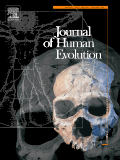
JOURNAL OF HUMAN EVOLUTION
Scope & Guideline
Decoding the Story of Our Ancestry
Introduction
Aims and Scopes
- Paleoanthropology and Hominin Studies:
The journal focuses on the study of hominins, including their anatomy, behavior, and evolutionary relationships. It publishes research on new fossil discoveries, morphological analyses, and implications for the evolutionary tree. - Archaeological Contexts and Cultural Evolution:
Research in this area investigates the archaeological record associated with hominins, including tool use, subsistence strategies, and cultural behaviors. The journal emphasizes the intersection of archaeology and anthropology in understanding human history. - Biological and Environmental Interactions:
The journal examines how environmental factors, such as climate and habitat changes, impact hominin evolution and behavior. This includes studies on dietary adaptations, biomechanical analyses, and ecological contexts. - Technological and Methodological Innovations:
Innovative methodologies, including geometric morphometrics, isotopic analyses, and machine learning applications, are explored to enhance the understanding of hominin evolution and behavior. - Comparative Analyses Across Primates:
The journal often includes comparative studies between hominins and other primates, focusing on evolutionary traits, locomotion, and social behaviors, providing insights into the unique adaptations of humans.
Trending and Emerging
- Integrative Approaches to Hominin Behavior:
There is a growing trend towards interdisciplinary studies that combine archaeological, biological, and ecological data to provide a holistic understanding of hominin behavior, subsistence strategies, and cultural practices. - Technological Advances in Paleoanthropology:
The use of cutting-edge technologies such as 3D modeling, machine learning, and isotopic analysis is on the rise, enhancing the precision of research and expanding the range of questions that can be addressed. - Climate Change and Hominin Adaptations:
Research examining the impacts of climate change on hominin evolution and behaviors is increasingly prominent, reflecting a broader interest in understanding how environmental stressors have shaped human development. - Functional Morphology and Biomechanics:
Emerging studies focusing on the functional aspects of morphology, particularly in relation to locomotion and feeding, are gaining traction, providing insights into the adaptive significance of anatomical traits in hominins. - Behavioral Ecology of Hominins:
There is a notable increase in research exploring the behavioral ecology of early humans and their ancestors, emphasizing social structures, foraging strategies, and interactions with other species.
Declining or Waning
- Classic Hominin Taxonomy:
While taxonomic studies of hominins remain important, there has been a noticeable decrease in papers solely focused on revising or naming new species, as the field moves toward integrating genetic and morphological data. - Paleoecological Studies on Non-Hominin Species:
Research concentrated solely on paleoecological contexts involving non-hominin species has diminished, indicating a shift towards more integrative studies that focus on hominin-specific impacts and interactions with their environments. - Descriptive Studies of Fossil Morphology:
There is a waning interest in purely descriptive morphological studies of fossils without accompanying analytical frameworks or evolutionary implications, as researchers increasingly seek to tie morphology to functional and evolutionary contexts. - Traditional Archaeological Approaches:
Traditional archaeological methodologies, such as basic artifact descriptions and site reports, are declining as the journal emphasizes more interdisciplinary approaches that incorporate advanced technologies and theoretical frameworks.
Similar Journals
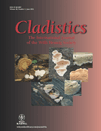
CLADISTICS
Unraveling the Complexities of Evolutionary RelationshipsCLADISTICS is a premier academic journal published by WILEY, dedicated to advancing the fields of ecology, evolution, behavior, and systematics since its inception in 1985. Renowned for its rigorous peer-review process and commitment to high-quality research, the journal is listed in the top quartile (Q1) of its category as of 2023, ranking 50th out of 721 journals in the Scopus database, placing it in the 93rd percentile. This significant standing underscores its critical role in the dissemination of pioneering research and methodologies that are shaping modern evolutionary biology. With a focus on clade-based phylogenetic studies and their applications, *CLADISTICS* serves as a vital resource for researchers, professionals, and students alike, fostering a deeper understanding of biodiversity and evolutionary processes. Although it does not offer open access, the journal is committed to providing comprehensive, state-of-the-art content that continues to influence the scientific community and guide future research directions.

African Archaeological Review
Celebrating the Complexity of African HeritageWelcome to the African Archaeological Review, a leading academic journal published by Springer, dedicated to advancing the field of archaeology with a unique focus on the African continent. Since its inception in 1983, this journal has become a pivotal platform for researchers, professionals, and students seeking to explore the complexities of African cultural heritage through empirical studies, theoretical discussions, and methodological innovations. With a commendable Q1 ranking in both Archaeology (Arts and Humanities) and Archaeology categories for 2023, this journal ranks among the top 10% of publications in its field, reflecting its influential contributions to archaeological scholarship. The Scopus ranking places it at #40 out of 413 in Arts and Humanities and #39 out of 354 in Social Sciences, highlighting its esteemed status within academic circles. Although it does not currently offer Open Access options, the journal remains committed to disseminating vital research findings that shape our understanding of Africa's rich archaeological landscape. Join a community dedicated to unraveling past human behaviors and interactions within diverse African environments through the pages of the African Archaeological Review.
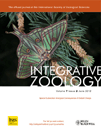
Integrative Zoology
Advancing the Frontiers of Animal ScienceIntegrative Zoology is a distinguished journal published by WILEY, focusing on advancing the field of zoological sciences through the integration of various biological disciplines. With both ISSN 1749-4877 and E-ISSN 1749-4869 identifiers, this journal features research that fosters a deeper understanding of animal biology, ecology, and conservation strategies. As a testament to its impact, Integrative Zoology is recognized within the Q1 category of Animal Science and Zoology in 2023, ranking an impressive #27 out of 490 journals in its field, placing it in the 94th percentile among peers. Published in the United Kingdom, this journal not only serves as a critical platform for novel research but also engages a global audience, inviting submissions that bridge theoretical and practical aspects of zoology. While not entirely open access, the journal remains committed to disseminating high-quality research that contributes substantially to scientific advancements. Through its continuous publication since 2008, Integrative Zoology aims to inspire researchers, educators, and students alike, making it a cornerstone for anyone passionate about the complexities of animal life.
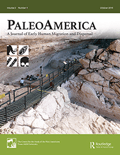
PaleoAmerica
Connecting Archaeology, Ecology, and PaleontologyPaleoAmerica, published by Routledge Journals, Taylor & Francis Ltd, is a leading academic journal dedicated to advancing the study of ancient peoples of the Americas. With a strong presence in the fields of archaeology, ecology, and paleontology, this journal holds Q1 rankings in its respective categories for 2023, reflecting its exceptional impact and relevance in academia. Covering a broad spectrum of topics related to human and ecological evolution from 2015 to 2024, PaleoAmerica serves as a vital resource for researchers, professionals, and students eager to explore pivotal findings and theories related to the prehistoric populations of North and South America. While the journal operates under a subscription model, its comprehensive scope and high-quality peer-reviewed articles make it indispensable for those engaging with the complex narratives of ancient American life.

Evolutionary Biology
Connecting Research and Ideas in Evolutionary BiologyEvolutionary Biology is a distinguished academic journal published by Springer, focusing on the intricate fields of ecology, evolution, behavior, and systematics. This journal, with the ISSN 0071-3260 and E-ISSN 1934-2845, has established itself as a critical platform for cutting-edge research and innovative ideas that shape our understanding of biological evolution and its implications. Operating from Germany, it ranks in the Q2 quartile in its category for 2023, placing it in the top tier of journals recognized for quality and impact, with a Scopus rank in the 66th percentile among its peers. Despite not being Open Access, this journal ensures comprehensive dissemination of knowledge essential for researchers, professionals, and students passionate about evolutionary studies. With a publication history tracing back to 1993 and converging years up to 2024, Evolutionary Biology continues to significantly impact the academic landscape, fostering dialogue and collaboration across various disciplines within the biological sciences.
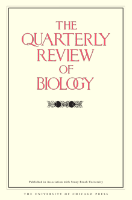
QUARTERLY REVIEW OF BIOLOGY
Your Gateway to Premier Biological InsightsQUARTERLY REVIEW OF BIOLOGY, published by University of Chicago Press, stands as a premier journal dedicated to the dissemination of high-quality research and review articles in the field of biological sciences. With an impressive impact factor and an esteemed ranking of Q1 in the Agricultural and Biological Sciences category, the journal is a vital resource for researchers, professionals, and students aiming to stay at the forefront of biological research and developments. Since its inception in 1945, the journal has evolved to cover a broad scope of topics, fostering interdisciplinary dialogue and providing critical insights that promote scientific advancement. Although currently not an open access journal, its reputation is underscored by a remarkable standing in the 95th percentile across Scopus rankings within its field. Located in Chicago, Illinois, this journal continues to be a cornerstone for scholarly communication in biology, making valuable contributions to both academia and practical applications in the biological sciences.

American Journal of Biological Anthropology
Exploring the Depths of Human DiversityThe American Journal of Biological Anthropology, published by WILEY, is a premier journal in the field of biological anthropology, boasting critical insights into human biological diversity, evolution, and adaptation. With its ISSN 2692-7691, this journal has established itself firmly within the research community, achieving a Q1 ranking in key disciplines such as Anatomy, Anthropology, Archeology, and Paleontology as of 2023. This indicates its significant impact, with Scopus rankings placing it in the top tiers across diverse fields, including a stellar rank of 13th out of 113 in Paleontology. Offering open access possibilities, the journal facilitates wider dissemination of groundbreaking research and is committed to advancing knowledge that intersects genetics, epidemiology, and anthropology. Based in the United States, the journal continually fosters an international dialogue among researchers, professionals, and students eager to explore the complexities of human biology through a robust and interdisciplinary lens.
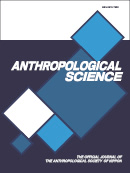
ANTHROPOLOGICAL SCIENCE
Unveiling the narratives of humanity through innovative methodologies.ANTHROPOLOGICAL SCIENCE is a prominent journal in the field of anthropology, published by the Anthropological Society of Nippon since 1993. With a rich pedigree of scholarly contributions, this journal is an essential platform for disseminating research findings and theoretical discussions that push the boundaries of anthropological knowledge. Currently ranked in the Q3 category in Anthropology by 2023 metrics, ANTHROPOLOGICAL SCIENCE boasts an impressive position at #163 out of 502 in Scopus, placing it in the 67th percentile among its peers. While it operates under a traditional access model, the journal supports a diverse range of anthropological research encompassing cultural, biological, and archaeological perspectives. Researchers, professionals, and students will find valuable insights and innovative methodologies that foster a richer understanding of human societies and behaviors. The current trends and findings published in this journal make it a crucial resource for those involved in anthropological studies or related fields.

Evolutionary Bioinformatics
Transforming evolutionary studies with cutting-edge techniques.Evolutionary Bioinformatics, published by SAGE Publications Ltd, is a pioneering open-access journal established in 2005, dedicated to advancing the field of evolutionary biology through innovative computational techniques and bioinformatics. With an ISSN of 1176-9343, it serves as a critical platform for researchers, professionals, and students to disseminate impactful findings and foster collaboration across disciplines. The journal spans a broad scope, contributing significantly to the areas of Ecology, Evolution, Behavior and Systematics, and Genetics, as evidenced by its respectable Scopus rankings and quartile placements in 2023. With a commitment to providing comprehensive, peer-reviewed research articles and tools for sharing knowledge, Evolutionary Bioinformatics plays an essential role in shaping the future of evolutionary studies and bioinformatics. Readers and contributors alike are encouraged to engage with cutting-edge research that pushes the boundaries of understanding in this dynamic field.
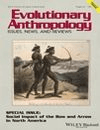
EVOLUTIONARY ANTHROPOLOGY
Charting New Territories in Human Evolution and HealthEVOLUTIONARY ANTHROPOLOGY is a premier journal published by WILEY, dedicated to advancing the field of anthropology through innovative and rigorous research. With an ISSN of 1060-1538 and an E-ISSN of 1520-6505, this journal boasts a remarkable Q1 ranking in both the Anthropology and Medicine (miscellaneous) categories, reflecting its significant impact within the academic community. Since its inception in 1992, it has continuously evolved, now encompassing a wide array of subjects pertinent to evolutionary studies and human health. Residing in the highly competitive Scopus rankings, it stands at an impressive rank of 10 out of 502 in the field, placing it within the top 2% of journals in Social Sciences - Anthropology. Researchers, professionals, and students alike will find this journal an invaluable resource for the latest findings, theoretical advancements, and discussions that shape our understanding of human evolution and its biological implications. While not categorized as an Open Access journal, EVOLUTIONARY ANTHROPOLOGY remains a vital outlet for high-quality scholarship, fostering dialogue and enriching knowledge across diverse audiences.